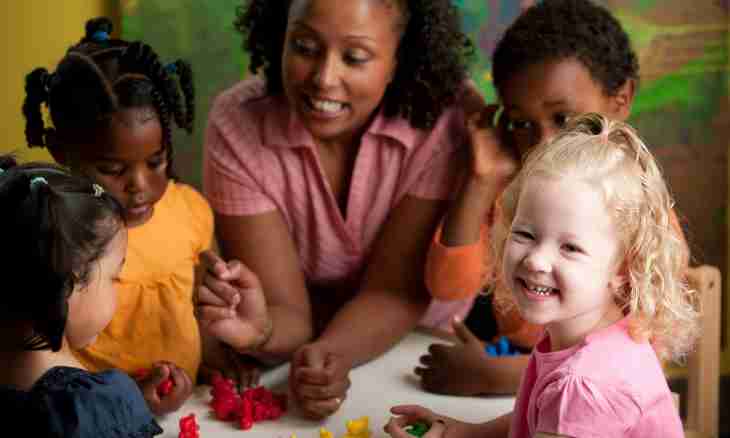When children reach three years, they have new requirements connected with development of their abilities and consciousness. Respectively, also the experienced fears change.
The age is characterized from three to five years by emotional filling of the identity of the child. Feelings are already not just lived, but begin to be called and blab out aloud. Children already not just look for themselves in hierarchy of the relations, but also this relationship seeks to build up. And here it is not only about family, but also about just acquaintances and age-mates. On this experience there is a formation of such categories as fault, conscience, experience. Children learn to express the feelings, to speak about them, and seek to hear about feelings of others in relation to themselves. Therefore often ask the question "whether you love me?" and also show tenderness, sympathy, compassion.
Besides formings of the relation with others, children also learn to build up the relationship with themselves. At this age they are capable to take long time themselves, to play alone role-playing games, to dream. It is natural and normal process, but at an unsuccessful course of life it becomes the factor enhancing imaginations and experiences of negative character.
Fairy tale characters in fears of children appear before three years, but now they appear and in the afternoon. Besides characters famous to all, imaginations of the child can give rise also the invented monsters. Also this age period is characterized by quite steady triad of fears: loneliness (losses of love), darkness and the closed space.
Despite affection for both parents (on condition of the equal and benevolent relations in family), children are closer by four years allocate the parent of an opposite sex. It is so-called "Electra's complex" - at girls, and "An Oedipus complex" - at boys. At insufficient emotional proximity with the parent of an opposite sex the child can have fears of the Baba-yaga or the Wolf, Barmaley – as experience of deficiency of attention and warmth. Male and female characters are respectively identified with dad and mom.
Practical advice
1. Everything also remains the most important prevention of fears in this age period emotional stability and tranquility in family, the equal relations. It is that resource which helps the child to cope independently with age features, with new experiences, this condition of protection and a support in life.
2. It is in addition important to remember that to the kid there is important an ability of family members to express the love to each other and to the child. And in the same place ability to accept this love. Do not disregard a stopyatidesyaty mention of the kid about the tenderness tested to you: embrace, kiss, thank, admit reciprocal feeling. The more our children hear how they are loved, the they become stronger and more courageous.
3. Never the behavior and words let know to the kid that you can not love him. The most terrible that the child can hear: "I do not love you" or "If you behave so, I will not love you". The same phrase can be said absolutely in a different way: "I am upset when you behave badly because I love you" - sense same, and is perceived absolutely in a different way.
4. The fear of darkness goes from those times when it concealed in itself the hidden predators and other danger. The one who was able to foresee these dangers and in time to react to them survived. Anyway through fear of darkness there pass all children, and it is normal. It is necessary to worry when this fear becomes persuasive. And the correct actions depend too on as far as this fear took roots inside. The night lamp can just be enough for some children nearby and permissions to switch on and off it at discretion – only one opportunity to operate darkness and light sometimes solves a problem. And other children perhaps will need much more help and supports in this case. Be not afraid to lay down near the child or to invite him in the bed, allow to leave slightly opened a door, ten times in an evening make sure that in a case there is nobody, tell the three-hundredth time that you will give nobody in offense of the little son or the daughter. It is difficult for adult to sustain all these rituals, but it is much more difficult to children to cope with the horrors before darkness and vulnerability – it should be remembered always.
5. Parents have to have an accurate rule is to punish never the child, locking it in the dark room or the storeroom. And even the known timeouts in the separate room have to be excluded by much at this age. Adults quickly see force of impact of such punishments, but not always understand force of its consequences: aggravation of fears, hung, stutters, nervous tics.
6. The age from three to five years is the period when work with fears can be conducted in images and creativity. Children are sympathetic on any games at this time. Draw fears together, you mold from plasticine, name them, play with them, tame them, care for them together with the child. Think out the fairy tales in exchange "terrible" - let the child will have options of various successions of events.

